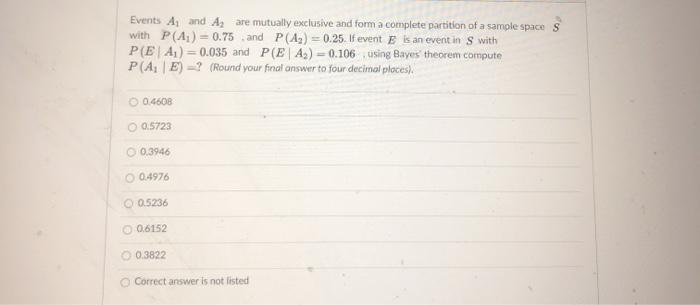Question
A 95% confidence interval for the unknown expectation of some distribution contains the number 0. a. We construct the corresponding 98% confidence interval, using the
A 95% confidence interval for the unknown expectation of some
distribution contains the number 0.
a. We construct the corresponding 98% confidence interval, using the same
data. Will it contain the number 0?
b. The confidence interval in fact is a bootstrap confidence interval. We repeat the bootstrap experiment (using the same data) and construct a new
95% confidence interval based on the results. Will it contain the number 0?
c. We collect new data, resulting in a dataset of the same size. With this data,
we construct a 95% confidence interval for the unknown expectation. Will
the interval contain 0?
Alice and Bob arrange to meet for lunch on a certain day at noon. However, neither is
known for punctuality. They both arrive independently at uniformly distributed times
between noon and 1 pm on that day. Each is willing to wait up to 15 minutes for the
other to show up. What is the probability they will meet for lunch that day?
2. Alice, Bob, and Carl arrange to meet for lunch on a certain day. They arrive independently at uniformly distributed times between 1 pm and 1:30 pm on that day.
(a) What is the probability that Carl arrives first?
For the rest of this problem, assume that Carl arrives first at 1:10 pm, and condition on
this fact.
(b) What is the probability that Carl will have to wait more than 10 minutes for one of
the others to show up? (So consider Carl's waiting time until at least one of the others
has arrived.)
(c) What is the probability that Carl will have to wait more than 10 minutes for both
of the others to show up? (So consider Carl's waiting time until both of the others has
arrived.)
(d) What is the probability that the person who arrives second will have to wait more
than 5 minutes for the third person to show up?
3. One of two doctors, Dr. Hibbert and Dr. Nick, is called upon to perform a series of
n surgeries. Let H be the indicator r.v. for Dr. Hibbert performing the surgeries, and
suppose that E(H) = p. Given that Dr. Hibbert is performing the surgeries, each surgery
is successful with probability a, independently. Given that Dr. Nick is performing the
surgeries, each surgery is successful with probability b, independently. Let X be the
number of successful surgeries.
(a) Find the joint PMF of H and X.
(b) Find the marginal PMF of X.
(c) Find the conditional PMF of H given X = k.
4. A fair coin is flipped twice. Let X be the number of Heads in the two tosses, and Y be
the indicator r.v for the tosses landing the same way.
(a) Find the joint PMF of X and Y .
(b) Find the marginal PMFs of X and Y .
(c) Are X and Y independent?
(d) Find the conditional PMFs of Y given X = x and of X given Y = y



Step by Step Solution
There are 3 Steps involved in it
Step: 1

Get Instant Access to Expert-Tailored Solutions
See step-by-step solutions with expert insights and AI powered tools for academic success
Step: 2

Step: 3

Ace Your Homework with AI
Get the answers you need in no time with our AI-driven, step-by-step assistance
Get Started


